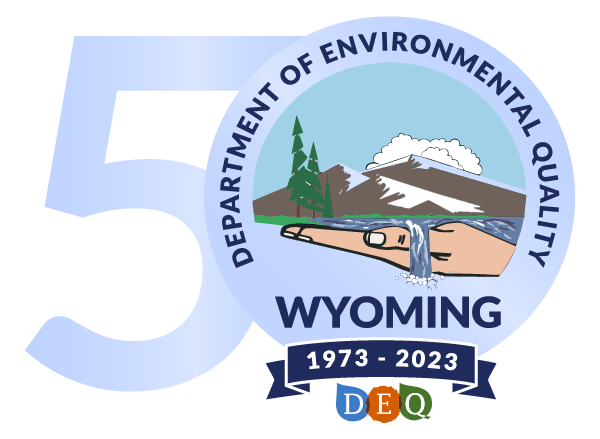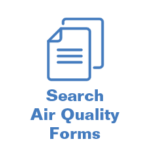- Home
- Public
- Resources
- Advanced Search
- Advisory Boards
- Careers
- District Offices
- e-Payment
- Enforcement Actions
- Meet the Director
- Mission Statement and Values
- Nondiscrimination Policy
- Outreach and Public Information
- Public Comments Online Portal
- Public Notices
- Records Requests
- Spill and Complaints
- State of the Environment
- Topics
- Divisions
- News
- Calendar
Smoke Management
- Home
- Air Quality
- Smoke Management and Open Burning
- Smoke Management
If the download box is not working below, please click here.
Did you know that Ownership Change Forms should be filled out when facility acquisitions occur and/or company name changes take place? The Air Quality Division has attached the Change of Ownership Forms for Minor Sources and Title V Facilities below for your convenience. These forms need to be completed and mailed to the following address:
ATTN: Planning Section
Wyoming DEQ - Air Quality Division
200 W 17th St, Ste 300
Third Floor
Cheyenne, WY 82002
It is important to submit completed ownership changes in a timely manner as IMPACT portal users will not have access to newly-acquired facilities until the completed forms are received and processed.
If you have any questions about ownership changes, please feel free to email deq-air-impact@wyo.gov or contact a staff member by phone at 307-777-7391.
Below are forms associated with ownership change.
If the download box is not working below, please click here.
Search all Air Quality webpage forms and documents below.
If the download box is not working below, please click here.
All official Wyoming State Rules and Regulations are kept at the Wyoming Secretary of State’s Office. Click here to view all current Rules and Regulations.
Smoke Management
The Smoke Management Program regulates large-scale vegetative burning for the management of air quality emissions and impacts from smoke on public health and visibility. Most homeowners and small-scale burning projects fall under the regulations for the Open Burning Program. Any who are burning under the Smoke Management program should use the online forms listed below:
A Smoke Management Program Guidance Document was developed by the agency in November 2004 to assist burners to ensure that they are in compliance with state regulations Chapter 10, Section 4. The document reviews and explains the requirements, and provides an accessible, easy-to-read guide. All burners are encouraged to read it before undertaking a burn of any size.
Agricultural Cropland Burning Overview (updated 8/6/15)
The following is an overview of the State of Wyoming regulations concerning the burning of vegetative materials related to agricultural croplands such as barley and wheat stubble after the crop has been harvested. For more detailed information concerning agricultural cropland burning please click here for the Guidance document (the yellow highlighted sections pertain specifically to agricultural burning), or send an e-mail to Smoke.Management@wyo.gov.
Chapter 10 (Ch. 10), Section 4 (Sec. 4) of the WAQSR became effective as an Emergency Rule on December 29, 2003. The Emergency Rule became a Permanent Rule on May 14, 2004. The Permanent Rule was then modified due to a petition, and the Modified Rule became effective April 5, 2005. Since the April 5, 2005, effective date, the Smoke Management Requirements in Ch. 10, Sec. 4 of the WAQSR have remained the same.
Ch. 10, Sec. 4(b)(xv) defines “Vegetative Material” to include agricultural plant residue. Smoke Management regulations state the provisions of Ch. 10, Sec. 4(c)(i) are applicable to “planned burn projections of vegetative material that exceeds 0.25 tons of PM10 emissions per day … on a contiguous land area and will be burned on the same day and by the same burner for the same management objectives. …”
Ch. 10, Sec. 4(f) states that an SMP-I burn project exceeds the thresholds in subsection (c)(i) {a burn that is projected to generate at least 0.25 tons per day of PM10 emissions} and is projected to generate less than 2.00 tons per day of PM10 emissions. Ch. 10, Sec. 4(g) states that an SMP-II burn project exceeds the thresholds in subsection (c)(i) {a burn that is projected to generate at least 0.25 tons per day of PM10 emissions} and is projected to generate greater than or equal to 2.00 tons per day of PM10 emissions. Table A on page 77 of the SMP Guidance indicates that burning 16 acres of field crops will generate 0.25 tons of PM10 emissions {SMP-I}, while burning 130 acres of field crops will generate 2.00 tons of PM10 emissions {SMP-II}.
In accordance with Ch. 10, Sec. 4(j)(i)(C) of the WAQSR, agricultural cropland burning is not subject to subsections 4(e)(ii), 4(f)(i), 4(f)(ii)(B), and 4(f)(v). Subsection 4(e)(ii) covers the permissions for Division staff to enter and inspect a property prior to or after a proposed burn. Subsection 4(f)(i) covers the requirement to notify the Division prior to the ignition of an SMP-I burn. Subsection 4(f)(ii)(B) covers the public notification requirements for an SMP-I burn. Subsection 4(f)(v) covers the submission of an SMP-I post burn report to the Division. It should be noted that these are the only agricultural cropland burning exemptions. Despite the exemptions listed above, Ag burners must comply with all other requirements of Ch. 10, Sec 4., including all SMP-II burn requirements, if burning 130 acres or more on a single day, and providing vegetative burn data in response to periodic surveys conducted by the Wyoming DEQ.
All forms pertaining to Smoke Management can be accessed on this page. You may locate the form(s) you need by browsing through the files listed below.
If the download box is not working below, please click here.
This page contains Guidance information, including procedures and timelines, for air emissions pertaining to Open Burning (large scale vegetative burning, including slash piles, broadcast burns, wildland fires, with emissions >0.25 tons PM10 per day).
If the download box is not working below, please click here.











